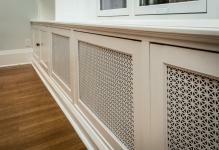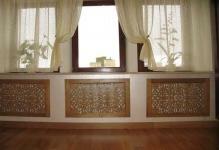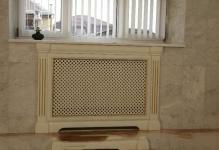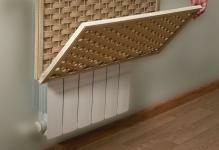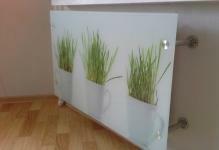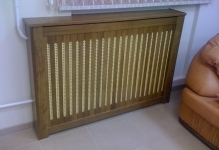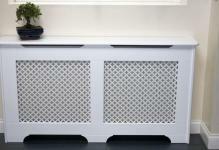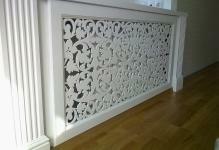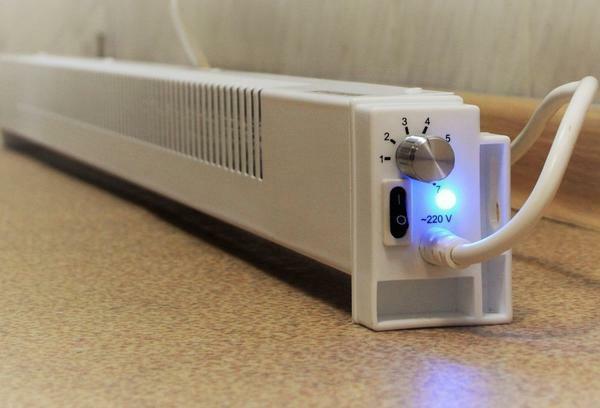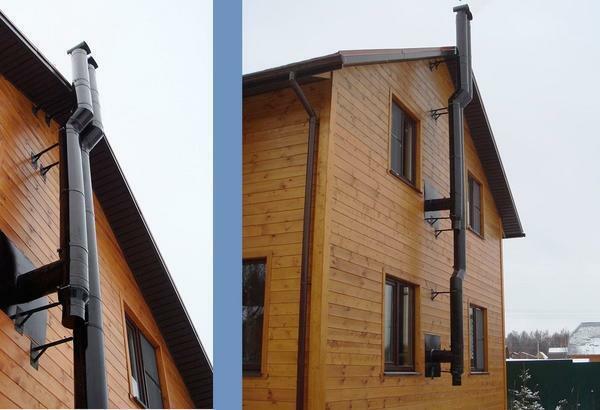 Hide heat radiators in the apartment can be using the screen Faced with the need for decorating the batteries in the room, we close them with a curtain screen, missing the opportunity to fantasize. You can hide batteries so that no one except the owners of the apartment will guess where the heating system passes.
Hide heat radiators in the apartment can be using the screen Faced with the need for decorating the batteries in the room, we close them with a curtain screen, missing the opportunity to fantasize. You can hide batteries so that no one except the owners of the apartment will guess where the heating system passes.
-
- How to close the heating battery in the room: decorating methods
- How to close the heating radiator by yourself in the kitchen and in the bathroom
- How beautifully to close the battery with the screen: decoration materials
- Fabrication of the false wall:How to close the battery with plasterboard
- How to close the heating batteries: the choice of materials( video)
- Examples of how to close the heating batteries and pipes( photo)
How to close the heating battery in the room:The
The massive old cast-iron batteries disturb the appearance of the room, even hidden behind a beautiful curtain, they attract unwanted attention. In addition, dust often accumulates between sections.
Even modern wiring from metal-plastic pipes and neat radiators made of light-alloy metals does not always fit nicely into the interior of the room.
Therefore, many owners are thinking how to cover the heating elements in the apartment.
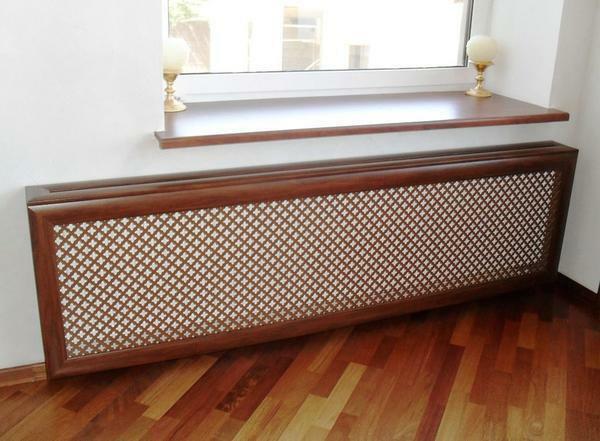 Hide heating radiators in several ways
Hide heating radiators in several ways
Decorative methods:
- The radiator made of cast iron will look good in a room in Victorian or Venetian styles. It is desirable to give it an "aged" look.
- Small radiators can be decoratively changed - painted in a bright contrast color that fits the style of the room or decorate the batteries with beautiful things.
- The simplest and most profitable way is to install a decorative screen on the radiator. Most often it is a metal grate, which has an affordable price and excellent thermal conductivity.
- The wood frame is an excellent solution for a kitchen or a rustic room. A wooden box mounted on the radiator can be fitted under the shelf or sill.
- A false wall or a gypsum board.
Many experts advise to glue the thermal reflector on the wall behind the battery, so the heat will not go to the street. The most commonly used foil insulation, which is easily glued to the wall and takes up a little space.
How to close the radiator with your own hands in the kitchen and in the bathroom
The problem of how to hide heating batteries in small rooms needs to be approached with great attention. Cumbersome cabinets or hanging boxes will look ridiculous, and not all materials are suitable for decor in rooms with high humidity.
If there is no possibility to install a nice coil in the bathroom, the battery should be better hidden so that it does not violate the general design of the bathroom.
Most often, the radiators are hidden in special neat lockers, which can be adapted for the storage of various household trivia. With small dimensions of the bathroom, the cabinet can visually reduce the space, so it is better to paint the radiator in the tone of the walls or replace it with a compact coil.
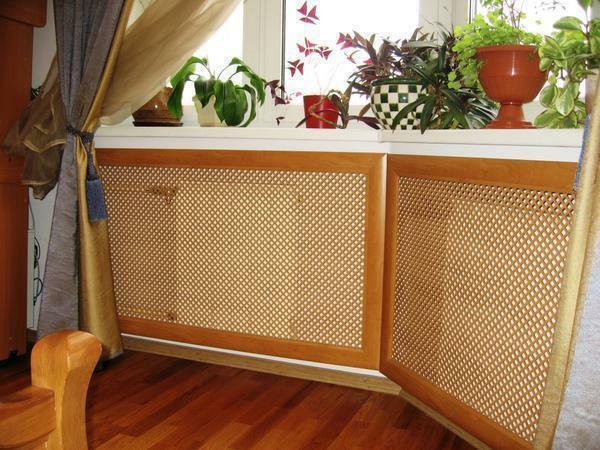 The heating radiator can be hidden behind a screen made of MDF or chrome-plated metal.
The heating radiator can be hidden behind a screen made of MDF or chrome-plated metal.
The battery placed below can easily hide behind a screen of MDF or chrome-plated metal. In this case, you need to choose materials that are not afraid of moisture. Many owners use glass as a decoration, but if there are small children in the house, it is better to abandon this idea.
In the kitchen, batteries are most often hidden under a narrow table top. This method is considered the most advantageous - the working area increases and the radiator hides nicely. Alternatively, the battery can be closed by an adjacent dining table, if the kitchen area allows.
How beautifully to close the battery with a screen: decorative materials
Decorative grilles installed on radiators not only mask heating elements, but also act as a protection against small children. They protect them from burns and bruises on the metal parts of the device.
In kindergartens and schools, a wooden fence is often installed on a cast-iron battery, which fits in almost any interior.
When installing screens on the radiator you need to consider its placement. Deep in the niche under the window, the batteries can be hidden behind a flat screen. Cast-in-front or under-sink cast iron radiators are hiding behind side-by-side boxes.
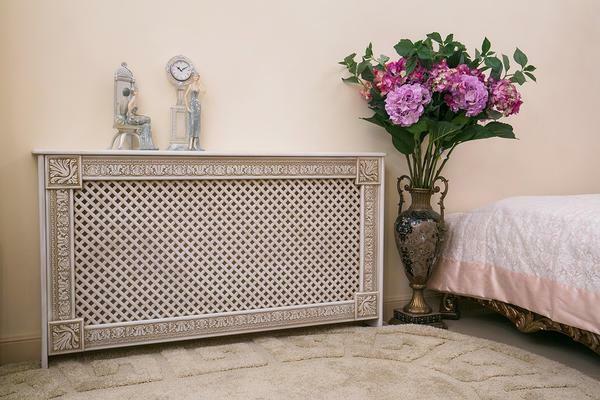 The battery screen can be made of various materials
The battery screen can be made of various materials
Material for screens on the battery:
- MDF;
- Metal;
- Drywall;
- Tree;
- Glass.
It is not recommended to use plastic in this case. When heated, the material can deform, which leads to a non-representative appearance. In addition, heated plastic releases harmful substances, which are not safe to inhale.
When closing the battery with a screen, one must also take into account the practical side of the question. A curtain shield made of wood can be adapted to a convenient shelf. Using sheets of chipboard, you can mount a low cabinet for the entire width of the room with the doors closing the battery.
Closing devices in a screen of thick glass with beautiful patterns will delight the eyes of even the most fastidious esthete. At the same time, the temperature in the room will decrease significantly. I perform my decorative function, the screen blocks the way to warm air.
Beautiful metal gratings with intricate patterns - one of the most common ways of decorating radiators. The more holes in the grill, the more heat enters the room.
Fabrication of a false wall: how to close the battery with plasterboard
Installation of a false wall from plasterboard is possible at the stage of construction or complete redevelopment of the room. Not only the radiators are hiding under the gypsum board wall, but the whole system of heating elements.
At installation it is necessary to remember, that the wall from a gypsum cardboard will take a part of the area of a room. If the room is small, the radiators can be hidden behind a box made of the same material.
Plasterboard sheets are fixed with self-tapping screws to special profiles of UD and CD.Before proceeding with installation, experts recommend impregnating gypsum board with several layers of PVA glue.
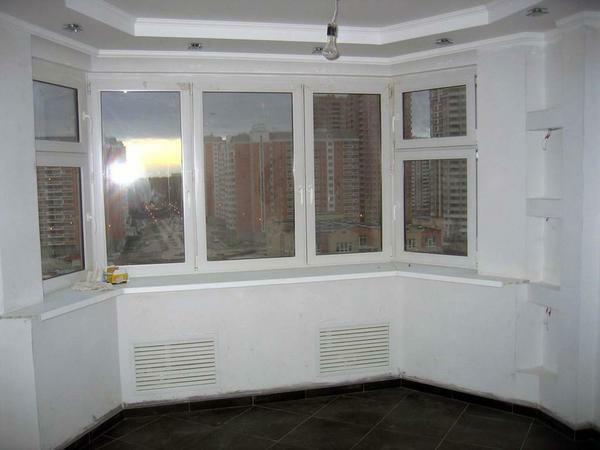 Installation of a false wall from gypsum board is possible during the construction or complete re-planning of the room
Installation of a false wall from gypsum board is possible during the construction or complete re-planning of the room
When constructing a false wall, it is necessary to provide in advance how to properly organize access to the wiring system and radiators. In addition, they need to be closed so that warm air can still find a way out. The protective shield for batteries can be made of wood, plastic or metal.
If it is not possible to close the entire wiring under a false wall, a niche with a battery under the window is sewn on the plasterboard. If desired, you can mount the panel around the perimeter of the room. The panel can be pasted with wallpaper, painted with water-based paint or trimmed with wood.
How to close heating batteries: the choice of materials( video)
The desire of the owners to hide the heating elements is understandable, but the solution of this issue should be approached with all seriousness. Having decided to seal pipes in the apartment, it is possible to completely cut off the heat supply inside, so heating costs can significantly increase.
Examples of how close the heating and pipe battery( photo)


